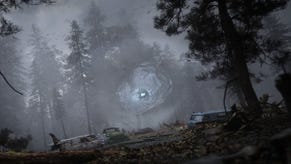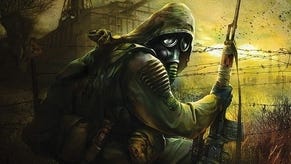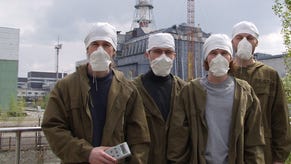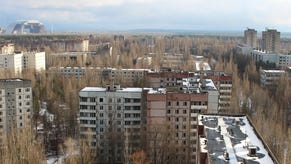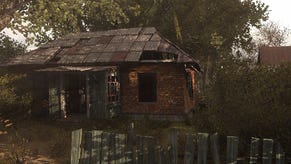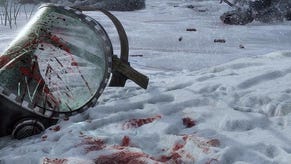S.T.A.L.K.E.R.: Clear Sky
Walkin' and Stalkin'.
War is like Christmas for some developers. It has ready-made stories, clear-cut opponents, and there's normally even a party at the end. War's also got the classy sheen of history, but it's history reduced to the bouncy bits: a chance to look sober while savouring the massive explosions. Not many human tragedies let you do that.
Nuclear disasters have massive explosions, too, but so far the real life examples haven't been such a good fit for videogames. Science-fiction may love a post-apocalyptic world, but it doesn't want reality stepping in to humanise the cliché. Nobody logs onto Xbox Live of an evening for a quick round of Three Mile Island, and so far there's only been one game of note dealing with a historical meltdown.
Well, duck and cover: it's getting a sequel. 2007's S.T.A.L.K.E.R.: Shadow of Chernobyl was always a wilfully difficult beast - at a time when most FPSes found it hard standing out, GSC Game World's title had trouble fitting in. Taking cues from Arkady and Boris Strugatsky's classic novel Roadside Picnic, Shadow cast the player as a scavenger in the exclusion zone around the ruined power plant - a fictionalised world home only to madmen, paranoid factions, and radioactive treasures. Appropriately, there was something mutant about the game itself, as it attempted to splice sandbox exploration with a linear plot, and evolve RPG upgrade elements out of an FPS's body.
The result was a game that was impossible to forget, but equally hard to classify. Ultimately, Shadow could never quite decide whether it was a story or a place. Those expecting the forthcoming prequel to clarify things can give up now. If anything, S.T.A.L.K.E.R.'s about to get even more confusing: the developers are adding yet another big idea to the mix.
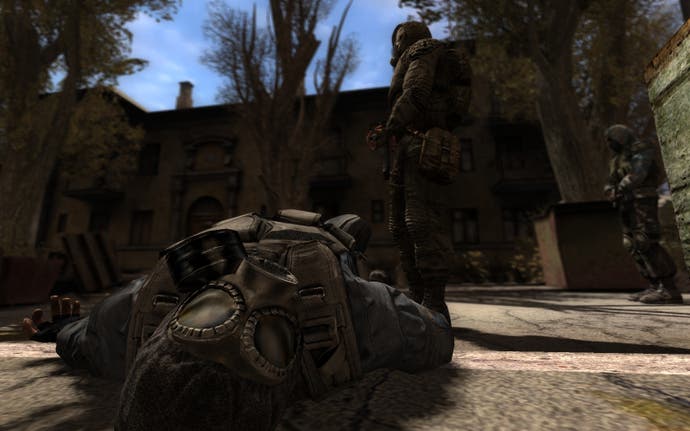
Sitting down to watch S.T.A.L.K.E.R.: Clear Sky being played reveals that new idea is to play up the role of the factions. Present in the first game, and part of the much-vaunted ALife artificial intelligence system, originally designed to create a believable ecology of NPCs who would travel through the zone independently of the player, the factions stuck out as promising ideas awaiting the correct implementation. This time, they're centre-stage, and the aim, at least for the majority of the game, seems to be choosing between them before getting involved in their battle for supremacy.
Simplistically, this means that each faction has its own base somewhere in the exclusion zone, which acts as a hub for missions and side-quests. But on a wider level, the faction mechanic plays out almost like a ground-level RTS, as different groups fight for control points, giving them a greater grip on resources, territories and scientific information.
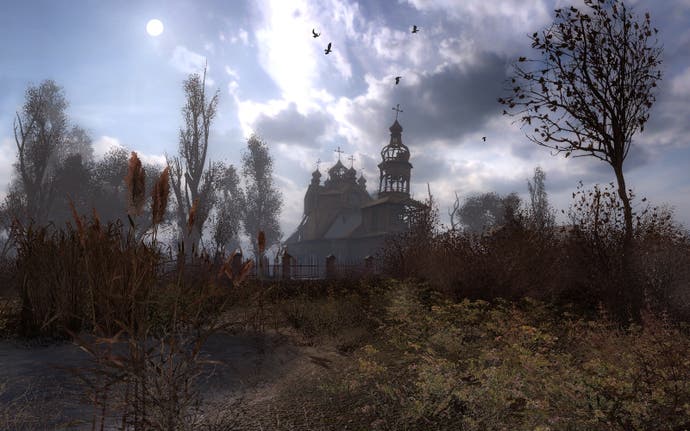
In gameplay terms, this currently would seem to cement the original game's eccentricities rather than curing them: Shadow was always more competent at making you stumble across activities than it was handing out well-structured missions, and as our preview of Clear Sky progresses, almost every story-focused goal that gets started ends up creatively derailed by another distraction, with the fight for territory top of the list. It's hard to tell how much of this is down to the state of the demo build (it could even be that our demoer is avoiding the main plot due to the untranslated Russian text of the current version) but the effect is as disorientating - and refreshing - as it was first time around.
Clear Sky has twelve areas - six are entirely new, and six are familiar, but significantly reworked. A visit to Escape, a woodland area with hills and bunkers which cropped up in Shadow, shows just what that means. The lay of the land, if not the landscape itself, is very different this time around - a Stalker-held area rather than the military stronghold of the first game.


